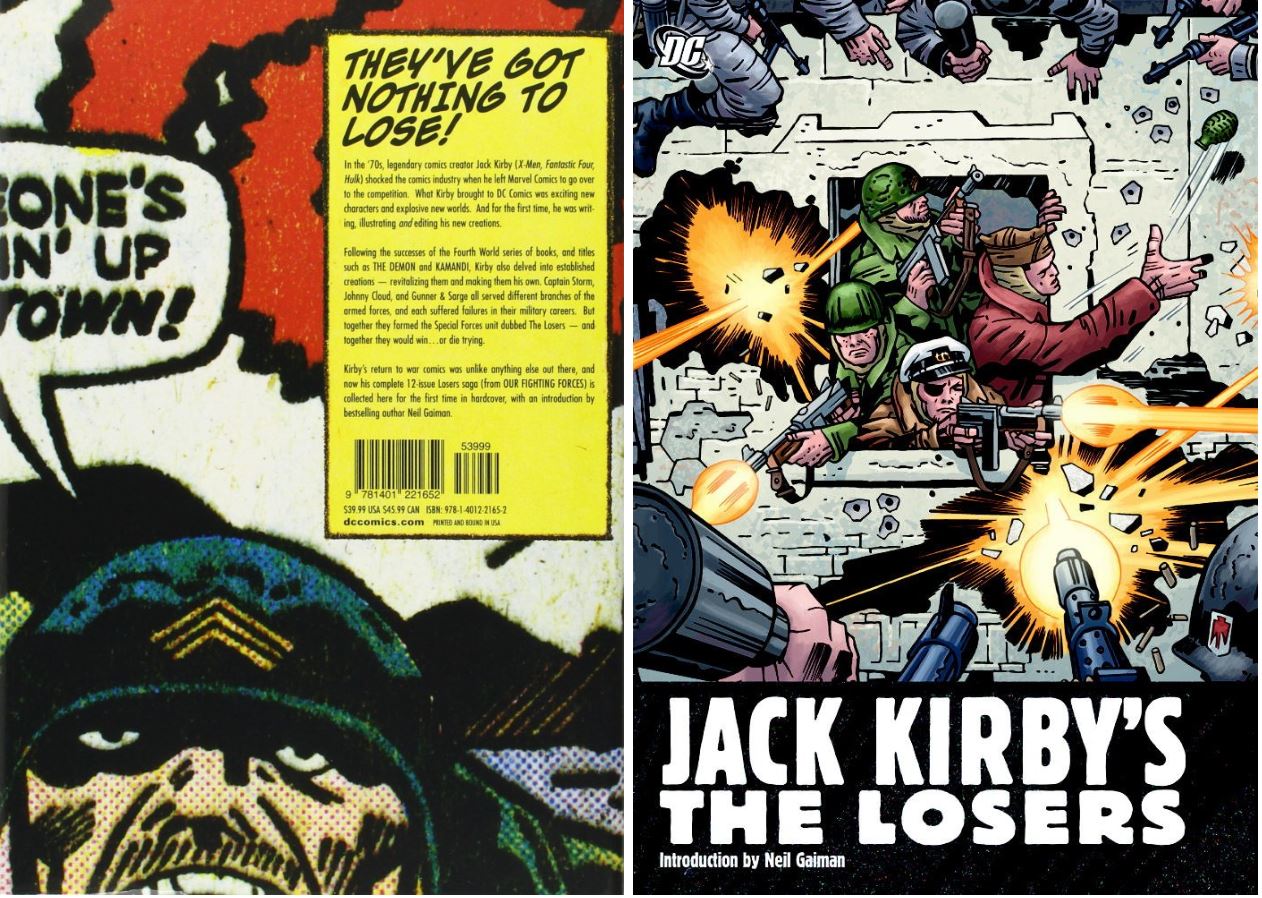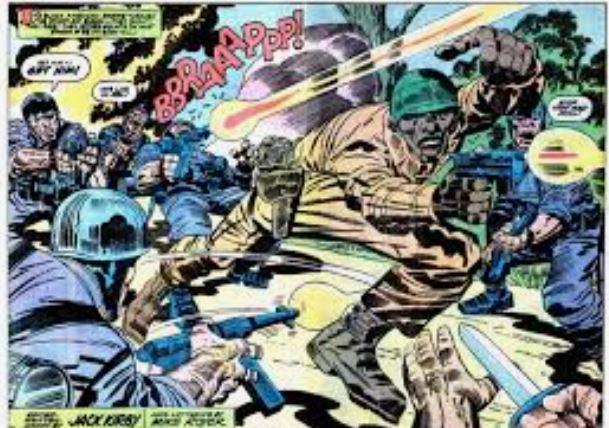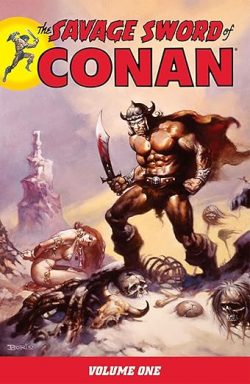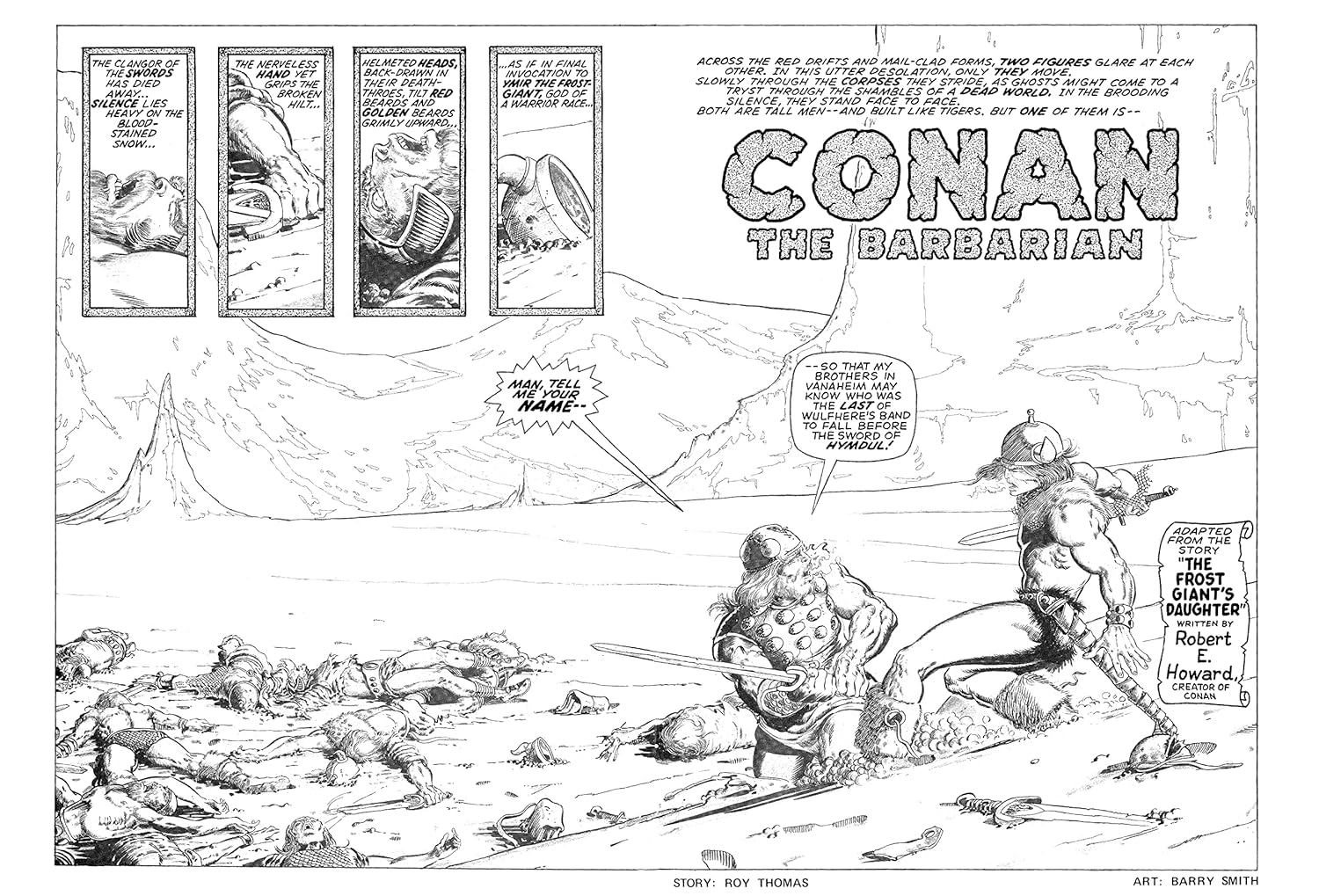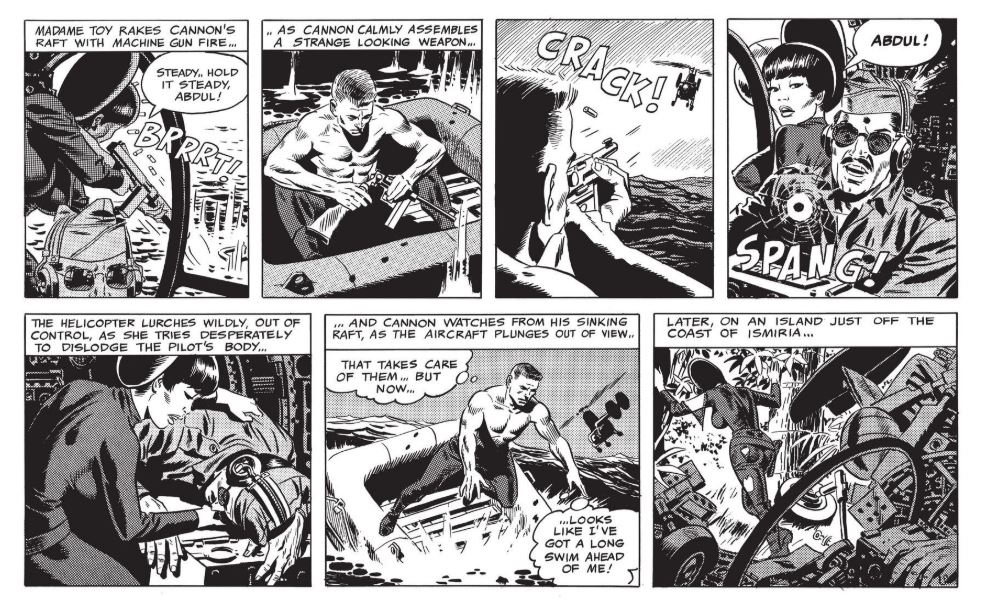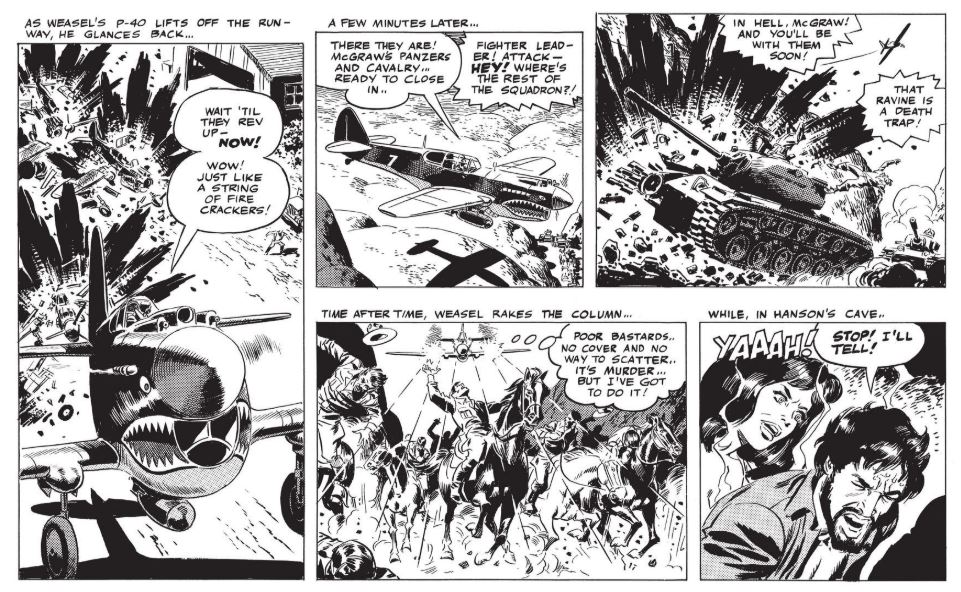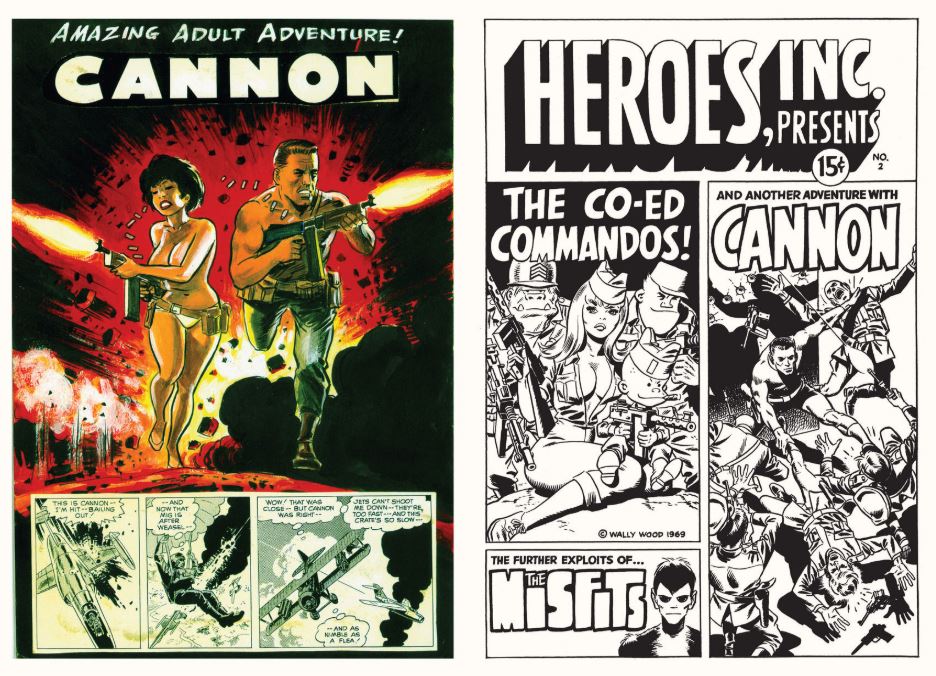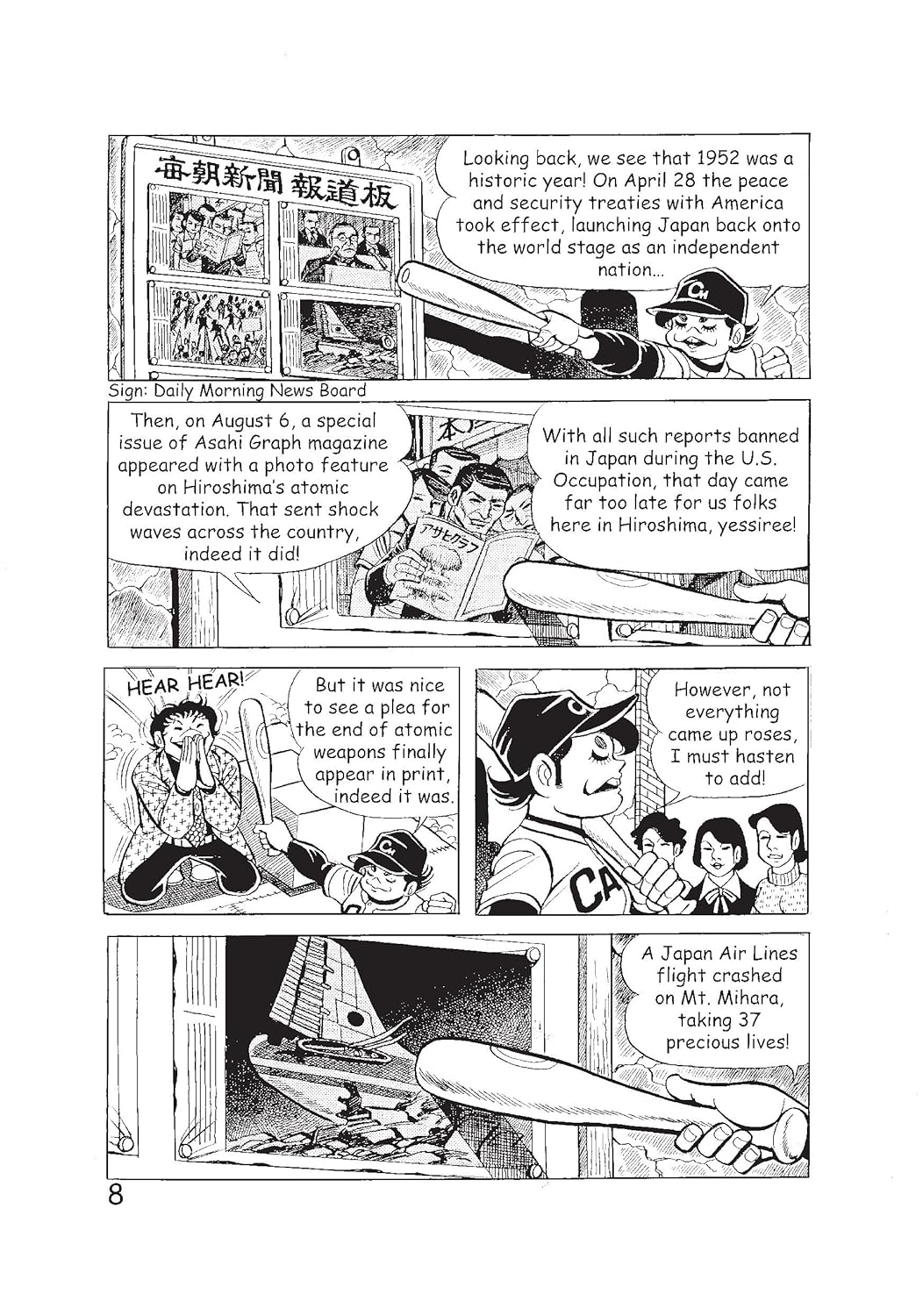
By Dave Wood, Robert Kanigher, David Khan, Hal Kantor, John Reed, France “Ed” Herron, William Woolfolk, John Reed, Art Wallace, Nat Barnett, Irv Novick, Carmine Infantino, Gene Colan, Bernie Krigstein, Frank Giacoia, Joe Giella, Bernard Sachs, Irwin Hasen, Bob Lander, Gil Kane, Ross Andru & Mike Esposito, Jerry Grandenetti, Bob Oksner, Mort Drucker, Sy Barry, Fred Ray, Eugene Hughes, Ray Burnley, Ray Schott & various (DC Comics)
ISBN: 978-1401229429 (TPB)
This book includes Discriminatory Content produced in less enlightened times.
In America following the demise of EC Comics in the mid-1950’s – and prior to Warren Publishing’s astounding Blazing Combat – the only certain place to find challenging, entertaining and often controversial American war comics was at DC. In fact, even as Archie Goodwin’s stunning yet tragically mis-marketed quartet of classics were waking up a generation, the home of Superman, Batman & Wonder Woman was also a cornucopia of gritty, intriguing, beautifully illustrated battle tales presenting combat on a variety of fronts and from many differing points of view. As the very public Vietnam War escalated, and secret wars in central America festered unseen, 1960s America increasingly endured a Home Front death-struggle pitting deeply-ingrained Establishment social attitudes against a youthful freedom-from-old-values-oriented generation with a radical new sensibility. In response, the military-themed comic books of DC (or rather National Periodical Publishing, as it then was) became ever bolder and more innovative…
That stellar and challenging creative period came to an end as all strip trends do, but some of the more impressive and popular features (Sgt. Rock, Haunted Tank, Unknown Soldier, The War That Time Forgot, The Losers, Enemy Ace) survived well into the second – post horror-boom – superhero revival as character not genre vehicles. Currently, English-language fans of war stories are grievously underserved in both print and digital formats, but this magnificent monochrome reprint compendium is still readily available. It collects Our Army At War #1-20, from August 1952 – March 1954. With war comics resurgent, it was a new anthology title that was on sale from June 11th 1952 which ran for 301 issues until March 1977, whereupon it was redesignated Sgt. Rock and soldiered on (sorry, couldn’t stop myself!) until #422 cover dated June 1988. The appeal of that style and genre has largely vanished from comic books but once, these were hugely popular casual entertainments for kids and others.
Pure anthology Our Army At War very much followed Harvey Kurtzman’s EC model for Two-Fisted Tales & Frontline Combat, primarily featuring the proud American fighting man on a variety of historical battlefronts including the Revolutionary War, War of 1812, Civil War, Spanish-American War, WWI and Korean War even whilst concentrating the majority of its creative firepower on WWII – in which the target readership’s fathers and older relatives had just fought.
Sans ado or preamble, OAAW #1 opens with ‘Last Performance!’ as Dave Wood, Frank Giacoia & Joe Giella reveal how former acrobats Eddie March & Bert Brown escape a deadly German ambush thanks to their old act and a little common sense, after which Kanigher, Irv Novick & Bernard Sachs take us to the Pacific theatre of war and explain – without dialogue – how an entrenched marine patrol only survive Japanese scare tactics by when they ‘Dig Your Foxhole Deep!’
Fanciful – if not outright whimsical – notions proliferated in this era and David Khan, Irwin Hasen & Bob Lander gleefully kick off the practise as a Kentucky mountain man (and a dog!) unused to combat boots provides invaluable pedal intel at the Kasserine Pass thanks to ‘Radar Feet!’ prior to Dave Wood, Gil Kane & Giella ending the issue with inter service rivalry in the Pacific as ‘SOS Seabees!’ sees US troops and navy engineers forced to cooperate to survive…
In issue #2, Kanigher returned his much-loved boxing-as-combat metaphor in ‘Champ!’ with Carmine Infantino & Giella limning a yarn of sporting rivals meeting again over gunsights and in foxholes, before Dave Wood, Bob Oksner & Sachs depicted a tense moment as a sentry spots what might be Germans disguised as GIs in ‘Second Best!’, after which a soldiers takes drastic action to ensure a little peace and quiet to finish ‘A Letter from Joe!’ (by Hal Kantor, Mort Drucker & Lander). The issue ends on Khan, Novick & Lander’s ‘Survival for Shorty!’ as a sensitive short-tempered pee-wee powerhouse strives to proves he’s as big a man as any of his team as they raid a Japanese stronghold…
Kanigher, Novick & Sachs open #3 with the war deep inside a US Marine’s head as he endures the pressure of another ‘Patrol!’ even as Wood, Kane & Lander offer ‘No Exit!’ for former stunt-bikers Skeets & Wally when the former’s combat-trauma traps them behind enemy lines with crucial knowledge of a forthcoming surprise attack…
Kantor & Eugene Hughes then prove superstitious Roy has no need of his lost ‘Lucky Charm!’, before Kantor, Drucker & Lander complete the issue with the tale of ‘Frightened Hero!’ Perry Walters whose tardiness made him a lifelong mouse… until he hit the D-Day beaches…
The contemporaneous Korean conflict led in OAAW #4 where Kanigher, Novick & Sachs reveal the lonely response – and fate – of the ‘Last Man!’ in a unit wiped out by the pitiless enemy after which Kantor & Bernie Krigstein introduce a soldier hoping to take it easy until his ‘Replacement!’ shows up, before Kantor, Ray Schott & Lander, explore the job similarities of a peacetime mailman once more carrying a ‘Special Delivery!’ through the mud and weather of the 38th Parallel. Kantor, Jerry Grandenetti & Giella then finish the forays with an ironically barbed close look at the ‘Soft Job!’ tank men face every day in modern warfare…
Staying in Korea, #5 opens with Kanigher, Novick & Sachs wryly exploring the perennial problem of keepsakes in ‘Battle Souvenir!’, whilst Kantor, Oksner & Lander cover the other regular misdemeanour of illicit underage enlistment as a seasoned officer must act quickly after finding out the age of new unit replacement ‘Baby Face!’. Combat engineers then get a moment in the spotlight – and mud – blowing a crucial bridge in ‘T.N.T. Bouquet!’ courtesy of John Reed, Gene Colan & Sy Barry, after which Khan & Hughes detail the rocky ride of an elite ‘Ranger!’ in a unit of ordinary dogface… until the shooting starts…
Variety overrules contemporaneity in #6 as Kanigher, Novick & Sachs head back to the American Civil War for ‘Battle Flag!’: the lyrical tale of a grandfather recalling what carrying that bloody banner as boy-soldier cost, and followed by a highly experimental yarn from Kantor, Grandenetti & Ray Burnley that’s tantamount to science fiction, wherein a ‘Killer Sub!’ meets its fate. Robert Bernstein & Hughes take us to Korea next as a GI foils a cunning booby trap and makes a mortal enemy determined to have the ‘Last Laugh!’ at any cost before Kahn, Colan & Giella close the issue with the charming tale of a US soldier and a music (and democracy!) loving Korean boy happy to help out as ‘Kid Private!’…
Cover-dated February 1953 and on sale from December 10th 1952, OAAW #7 closed the first year with a mixed bag of yarns beginning with ‘Dive Bomber!’ by Kanigher, Grandenetti & Giella, wherein the novice team piloting a Curtiss Helldiver in a mass attack against the Japanese Navy are shot down and must survive all perils…
Kahn, Drucker, Lander then upgrade to Korea and trace the perilously peripatetic path of a US service pistol as narrated by ‘I, The Gun!’, prior to Reed, Colan & Lander detailing how lost puppy Tugger saves a doughboy patrol from murderous ‘Counterattack!’ before we close on alpine WWII combat as Wood, Colan & Giella’s ‘Mountain Trooper!’ learns a lesson about glamour jobs before returning to the good old infantry…
In #8, Kanigher & Novick’s ‘One Man Army!’ cogitates on being a cog in a massive war machine before single handedly conquering a communist Korean citadel, whilst Wood & Krigstein spectacularly play with the form in ‘Toy Soldier!’ – the short saga of an amazing inventor in the US trenches of the Great War. Reed & Colan then present ‘Rearguard!’ action as a lonely man holds off an unseen army and ponders his life before a brief cessation of hostilities as Wood, Grandenetti & Giella test argumentative sibling soldiers with roaring rapids, crucial supply deliveries and many, many murderous “commies” chasing then through the ‘Pusan Pocket!’…
Opening #9, uncanny coincidence and the powers of a jinx concern the crew of US submarine Flying Fish after picking up a message in a bottle written by members of their WWI namesake. The eerie tale of the ‘Undersea Raider!’ (by Kahn, Colan & Giella) ends badly and portentously for all before segueing into Wood, Grandenetti & Sachs’ generational saga of US pilots whose glorious deaths in combat overwhelm the latest scion and compel Joey Rickard to become a ‘Runaway Hero’ by joining the infantry in Korea. However, destiny is a harsh mistress…
Bernstein & Hughes test out motor pool instruction theory when novice corporal Jim Terris goes off book to deliver crucial supplies by making a ‘Fatal Choice!’ after which Kahn & Krigstein imaginatively refocus the ‘Eyes of the Artillery’ when a fighter pilot is forced to become a specialist bomber in primitive crate to destroy a deadly North Korean supergun…
Kanigher & Krigstein lead in #10, with Signal Corps veterans Don & Steve adding to their already lethal workload as ‘Soldiers of the High Wire’ when their commanding officer sanctions a broadcast for the folks back home and they have to keep the civilians alive and recording despite attacks from jets, tanks and even Korean guerillas…
‘Deadlock!’ by Wood, Colan & Giella then details how a downed American pilot and his Nazi counterpart are trapped in a standoff on a sinking submarine, each anticipating rescue by their side as time runs out. Next, Kantor, Grandenetti & Giella reveal how ‘Chessmen of War’ decide the course of a battle when captured Red Chinese Major Tao plays a fateful game with his US interrogator, after which we close on Kahn & Krigstein depict the ultimate triumph of a ‘Fighting Mess Sergeant’ taken prisoner by North Koreans…
Our Army At War #11 opens in the sky where Kanigher, Novick & Sachs compare the attitudes of Kamikaze pilots and US swabbies shooting them down in ‘Scratch One Meatball!’, whilst Kahn, Colan & Giella stick with the last days of WWII – specifically Luzon island – for ‘Guerilla Fighters’, where a grizzled yank sergeant and a young Filipino recruit make things hot for the embattled occupiers. Kantor & Hughes stick to same war but head to Europe for a ‘Combat Report’ as embedded war correspondent (albeit for a company newspaper) Davey Brown gets fed up with evasions from GIs and makes his own news before Wood & Krigstein return to Korea and depict how an embarrassing present from home can change a ‘Soldier’s Luck!’
William Woolfolk, Grandenetti & Giella secure pole position in #12 as ‘Flying Blind’ sees a cynical solitary US Navy pilot learn to trust when he is injured in mid-air even as Kahn, Colan & Giella oversee the reuniting of a team of track & field sportsmen on a Pacific island infested with Japanese killers and forced to endure a ‘Death Relay’ to survive, before Reed, Colan & Sachs define the ‘End of the Line!’ for a publicity-seeking fool who always had to be first in peacetime and paid the price for it in battle-shattered Belgium. Kanigher & Novick pause the fighting for the moment in a tale of performance anxiety as a paratrooper frets over ‘The Big Drop!’ on the night before D-Day…
Woolfolk, Grandenetti & Giella again lead in OAAW #13 as the torch of mentor/guardian passes from one pilot to another above bomb-shattered Japan in moody yarn ‘Ghost Ace!’, after which Wood, Novick & Sachs describe how ‘Combat Fever!’ chills one hypochondriac GI as his unit establish a beachhead on the ferociously occupied Solomon Islands. Human frailty and pomposity are punctured in Kahn, Colan & Giella’s ‘Phantom Frogman’ as a Navy hero describes the mysterious undersea guardian angel actually responsible for all his feats and medals before the issues closes on ‘Minuteman of Saratoga!’ by Nat Barnett & Krigstein wherein cocky young Roger Holcomb eventually proves his worth to his elders in the proud militia…
The concentration on American servicemen ended in #14 as Woolfolk & Krigstein share the militarily profound and uplifting tale of a boy more steadfast than Napolean himself and known forever after as the ‘Drummer of Waterloo’, before Kahn, Colan & Giella return to quarrelsome GIs in a foxhole inadvertently capture Nazi bigwigs in ‘Double or Nothing!’ Woolfolk, Ross Andru & Mike Esposito then detail the casual heroism of a military doctor who goes all out to save his patients as a ‘Soldier Without Armor’, in advance of the same author – with Grandenetti & Giella – exposing one soldier’s phobia over heavy ordnance… and how he was cured by a ‘Killer Tank’…
Kanigher, Novick & Sy Barry claimed the lead spot in #15 as ‘Thunder in the Skies’ exposed the pressures of night bombing raids over Germany as experienced by the waist gunner of a Flying Fortress, before Art Wallace, Colan & Sachs visit Italy as a history loving GI – one of the US divisions trying to kick out the Nazis – becomes an unwilling ‘Tourist with T.N.T.’ Reed, Colan & Giella then embrace 1918 and the Battle of Chateau Thierry as members of the 4th Marine Brigade take ‘A Sunday Walk’, into utter carnage before a ceasefire of sorts closes the issue with Reed, Grandenetti & Sachs’ ‘The Fifteen-Minute War’ – a brutal, barbaric fug-enshrouded 1942-set battle for Massacre Ridge on Attu in the Aleutians…
Obsessive hunger for vengeance grips hard in OAAW #16’s opener, ‘A Million-to-One Shot!’ as Kanigher, Novick & Giella detail how the lone survivor of a Japanese strafing attack on shipwrecked sailors turns into a quest spanning the entire Pacific war. Nat Barnett, Andru & Esposito cover a typically gung-ho ‘Battle of the Bugles!’ during the Spanish-American War’s attack on San Juan Hill, before Reed, Colan & Giella channel cyclic history for a 1940 ‘Last Stand!’ in the mountains of Greece with eerie echoes of 300 Spartans at Thermopylae. Ending on a lighter note, France “Ed” Herron, Andru & Esposito share the story of a street corner in liberated French city Metz that suddenly comes under Nazi attack with only a ‘Traffic Cop Soldier!’ to save the day…
Kanigher & Novick detail combat on skis to start #17, as ‘The White Death!’ follows an elite snow-skimming team ordered to take a key mountain pass untouchable by bomber raids, whilst Barnett, Colan & Giella draw the ‘Sword for a Statue’: revealing the strangest exploit of the War of 1812 and West Point’s mythology. Then, Wallace, Hughes & Giella recount an aspiring author’s ‘Battle Without Bullets!’ and unbelievable victory over his German captors, prior to Herron, Grandenetti & Sachs showing how a ‘Washed-Out Cadet!’ failure to make pilot officer is the Japanese’s loss after he finds his true killing calling…
Kahn, Colan & Giella open #18 in WWII as a Navy rescue helicopter pilot continually causes trouble in ‘The Duel’ by picking fights with Nazi infantry and even shipping and U-Boats, after which we head back to 1775 where ‘Frontier Fighter’ Mr. Wade casually and most effectively tramples all over the old-fashioned rules of combat held dear by his British employers and their French opponents in a frighteningly belligerent tale of early American exceptionalism from Barnett, Grandenetti & Sy Barry. Reed, Andru & Esposito then wittily address a fluke of combat as a simple corporal is rotated out before ever even seeing a Germen. Happily for him his ‘Delayed Action’ getting back to his lines more than makes up for his previous lack of stories to tell his kids. The issue closes with a more serious yarn from Woolfolk, Colan & Sachs as a sleep-deprived Pacific based Marine is constantly told to ‘Wake Up – And Fight!’
Penultimate inclusion OAAW #19 commences with Kanigher & Novick’s ‘The Big Ditch’ as a fighter pilot shot down by a Focke is picked by a Nazi crash boat and interrogated at a hidden rocket base before escaping and destroying it all. That remarkably low concept yarn is made up for by Woolfolk, Grandenetti & Giella’s ‘No Rank’ as damaged, isolated lone wolf Jack Randall learns the value and responsibilities of leadership, after which historical specialist/veteran Superman and Tomahawk illustrator Fred Ray delivers a potent paean to the Civil War with his Gettysburg-set ‘Stand-In Soldier’, after which Kahn, Colan & Giella play games as ‘G.I. Tarzan’ sees a former ape-man actor employ what he learned on set to flush out Japanese soldiers hiding in lush island jungles…
Closing this vintage veteran-fest, Our Army At War #20 (cover dated March 1954 and on sale from January 4th) sees Kanigher, Grandenetti & Sachs launch proceedings with the life story of USS Lion from the mustering of its crew to the Captain’s command to ‘Abandon Ship!’, whilst Joseph Daffron, Andru & Esposito more light-heartedly trace the fall and rise of a seemingly cursed B-25 bomber in ‘The Flying Crackerbox’. Herron & Frank Giacoia address the hostility and acrimony of defeated southern soldiers in ‘The Blue and the Gray’, and the epic war stories conclude for now with ‘T.N.T. Mail!’ by Woolfolk, Grandenetti & Giella wherein contented loner and voluntary outsider Charlet West at long last learns the value of comradeship during a colossal tank engagement…
With covers by Novick, Infantino, Giella, Giacoia, Kane, Colan, Krigstein & Grandenetti this compilation is technically excellent but suffers from many flaws caused by changing tastes and expanded consciousness. Bombastic, triumphalist and frequently overbearingly jingoistic, this mighty black-&-white treasure trove of combat classics also holds thoughtful, clever and even funny yarns of relatively ordinary guys in the worst times of their lives, making it a monument to a type and style (if not ideology) of storytelling we’re all the poorer without. Hopefully the publishers will wise up soon and begin restoring their like to the wide variety of genre sagas currently available in graphic collections…
© 1977, 1978, 1979, 1980, 2014 DC Comics. All Rights Reserved.


